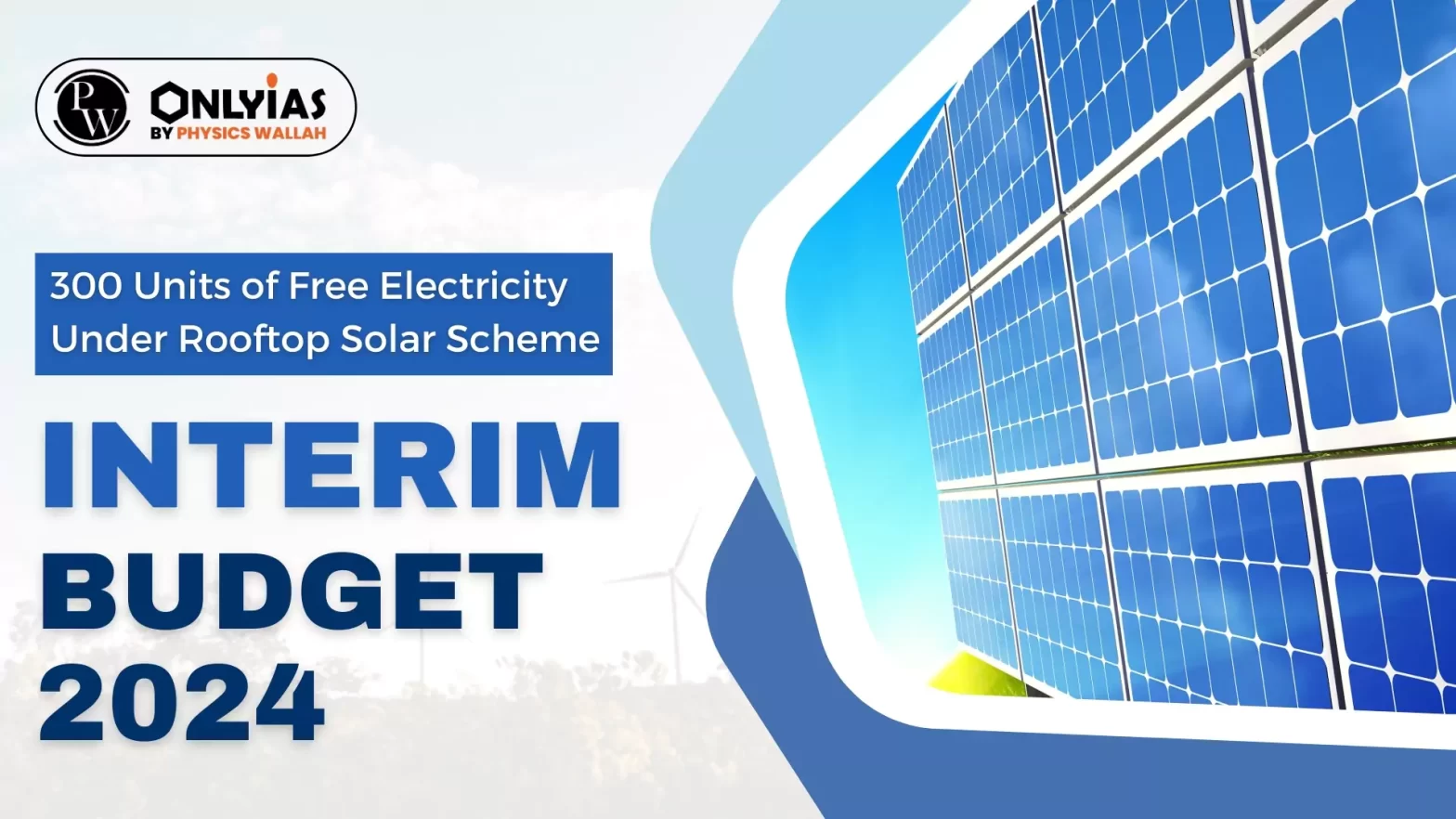Context:
This editorial is based on the news “A sunshine initiative: On the government’s rooftop solar panel plan” which was published in the Hindu. Recently, the Finance Minister of India presented an interim budget 2024 and reiterated a plan by the Prime Minister to supply power to one crore households in the country using rooftop solar panels.
India’s Position On Rooftop Solar Energy
- Only 12 gigawatt (GW) out of an intended 40 GW of rooftop solar panels has been installed.
- Household rooftops account for only 2.7 GW with the rest being commercial or building units.
Enroll now for UPSC Online Course
Provisions Of Rooftop Solar Scheme: PM Suryodaya Yojana
- Installation of System: Households that have a monthly electricity consumption of less than 300 units a month will be able to install a mid-sized system with the government bearing the expense.
- Rise in Subsidy: The subsidy will increase to 60% from 40% and the rest will be financed by a private developer who is affiliated to a public sector enterprise connected to the Power Ministry, earlier the remainder having to be borne by the consumer.
- Mechanism of Net-Metering: The surplus electricity produced by households can be sold back to the grid to make good the loan, though the actual way of implementation can be complex.
Significance of PM Suryodaya Yojana: A Rooftop Solar Scheme in India
- Economic Benefit: This could mean a minimum outlay of ₹1 lakh crore and would help households save ₹15,000 annually.
- Reliable Quality & Service: This will ensure quality in installation and also reliable service.
- Easy to Calculate: About 80% to 85% of 25 crore to 30 crore households in India use between 100 units and 120 units of power a month on average. Therefore, finding one crore houses that will be eligible for the plan will not be a difficult task.
Differences From Earlier
- Centre Solarization: The major difference from earlier solar promotion policies is that it is the Centre, as opposed to the State power distribution companies (discoms), that will be pushing for solarisation.
- By-passing Discoms: India’s discoms, most of which are heavily loss making, have had little incentive so far in moving high-consumption customers to decentralised solutions, such as rooftop solar.
- Given that such discoms have the best granular information about power supply at the household level, by-passing them will not be a successful strategy.
Enroll now for UPSC Online Classes
Conclusion
It is a step in the right direction as the move towards decarbonised power will be half-hearted if it does not involve households. This move can thus galvanise a subsidiary domestic industry of solar panels and must be tweaked in a way to be more accommodative to States. However, changes should be made to include discoms in the best of their potential to achieve more as they have high information.
Also Read: India Hosts Sixth Assembly of the International Solar Alliance
![]() 5 Feb 2024
5 Feb 2024

